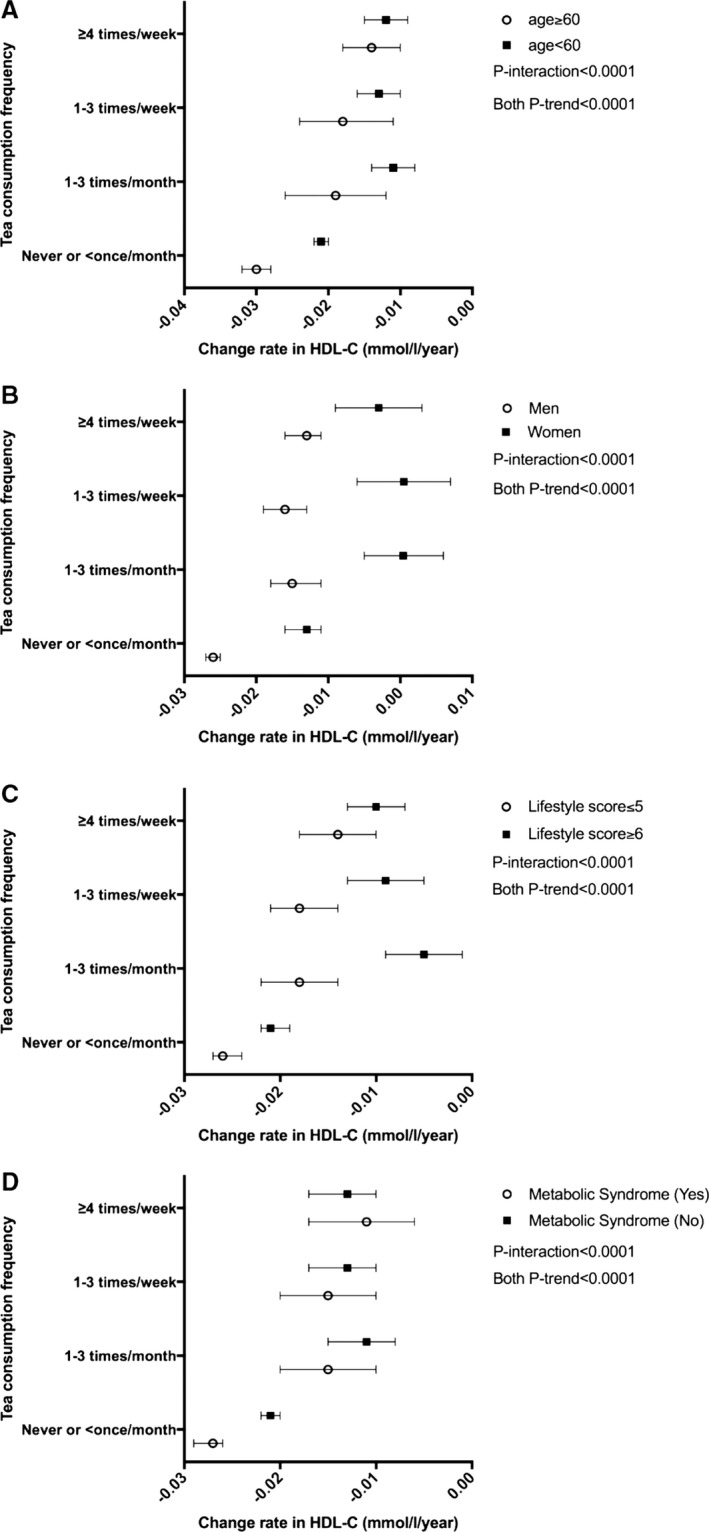Figure 2.

Time‐dependent decrease rate (95% confidence interval) in HDL‐C concentrations (mmol/L per year) by tea consumption frequency in subgroups by age (A), sex (B), lifestyle score (C), and metabolic syndrome (D). Tea consumption was categorized into 4 groups: never or less than once/month, 1 to 3 times/month, 1 to 3 times/week, or ≥4 times/week. The model was adjusted for age, sex (men or women), education (illiterate, middle, or college), income (<600, 600–1000, or >1000 RMB/month), occupation (white collar, coal miner, or other blue collar), physical activity (inactive, moderate, or active), smoking status (never, past, or current), alcohol drinking status (never, past, or current), blood glucose status (normoglycemia, impaired fasting blood glucose, or hyperglycemia), blood pressure status (normotensive, prehypertension, or hypertension), body mass index (in kg/m2; <24, 24–27.9, 28–29.9, or ≥30), waist circumference (<85 or ≥85 cm for women, and <90 or ≥90 cm for men), C‐reactive protein (<1, 1–2.9, or ≥3 mg/L), fatty liver (none, mild, or severe), low‐density lipoprotein cholesterol, and triglyceride. Generalized estimating equation models were used to model change rates and to test differences in change rates compared with the never or less than once/month group. Linear trends in HDL‐C change rate across all the groups were tested for significance by treating the group number of tea consumption as ordinal variable. All P‐interaction <0.01.
